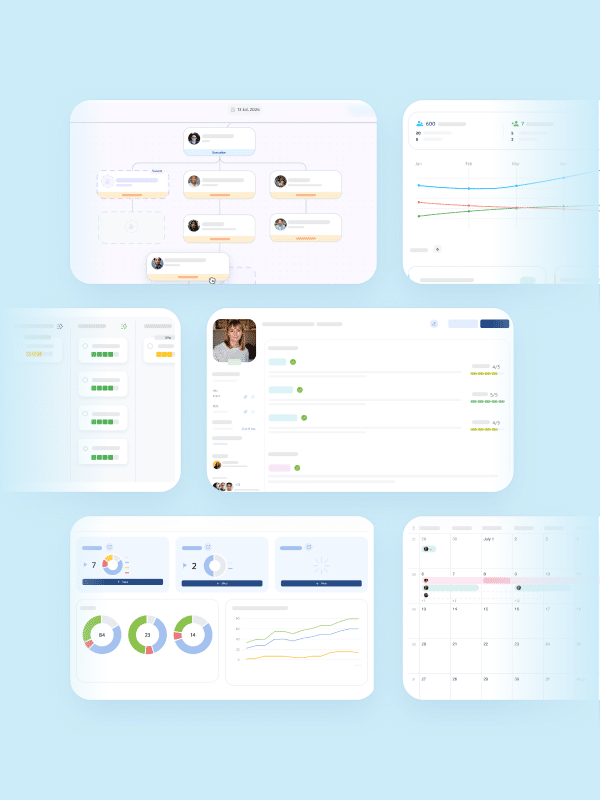The Value of Well-Designed Onboarding Processes – and the Benefits of Automation
17 Aug, 2023
5 min
At a time when competition for talent is fiercer than ever, and organizations are constantly adapting to change, the ability to effectively introduce and engage new employees is crucial. Developing and implementing role-specific onboarding processes should not just be seen as an administrative task but as a strategic investment that can beneficially impact the success of the organization and overall work culture.
Smooth integration with automation
One of the most powerful tools that can complement and enhance onboarding processes is automation. Today’s technology makes it possible for a well-developed HR system to handle administrative and repetitive tasks, freeing the HR team to focus on creating meaningful interactions and engaging introductions for new employees. The automation also makes it possible to deliver important information, including organizational policies, tasks, and internal resources in a structured and time-saving way.

Quote from Bredband2
We wanted to ensure a great onboarding process for all new employees, supported by Heartpace HR system.
Personalization for stronger engagement
While automation can take care of standardized processes, it is important that the onboarding process still retains a personal touch. Welcoming new employees to the organization with a customized introduction that reflects their specific roles and responsibilities is a crucial part of creating engagement from day one. Communicating clearly and consistently, as well as providing opportunities for interaction with existing team members early in the onboarding process, sets the stage for a positive experience. This positive experience, in turn, has a direct impact on employee motivation, engagement, and loyalty.
The importance of clear communication
A well-designed onboarding process also serves as a communication channel for the organization’s values, goals, and expectations. It is an opportunity to communicate what is expected of new employees and how their performance contributes to the success of the organization. Integrating the company’s vision and culture into the onboarding process allows employees to feel a stronger connection to the company and its goals.
This clear and open communication not only helps new employees adapt quickly and effectively, but it also creates an atmosphere of mutual respect and openness. Employees feel valued and included from the outset, which contributes to a strong team spirit with a high level of cooperation. In addition, it authentically reinforces the organizational culture and its values by embedding them in employees’ daily work and decisions.

Watch the webinar on the same topic!
Book a demo here to see Heartpace HR system
A valuable contribution to employer branding
The onboarding process also has a direct impact on the organization’s employer branding. A successful and positive induction creates a first experience that leaves a lasting impression on new employees. This positive start can be spread through employees’ networks, helping to attract new talent. A reputation as an employer that invests in its employees and welcomes them in the best way possible has a direct impact on the company’s ability to attract and retain qualified employees.
It is therefore clear that the onboarding process is not just a routine introduction to the business, but a strategic opportunity to influence how employees and the outside world perceive the organization. Therefore, take the opportunity to invest time and resources in carefully designing and automating these processes to not only optimize your internal workflow but also create a strong foundation for successful and attractive employer branding.

Do you want to know more about onboarding?
Heartpace HR system has a dedicated module to support the digital employee experience from day 1.
Adapting to organizational needs
Implementing role-specific onboarding processes means not only following a standard template but also tailoring the induction to the specific needs and culture of the organization. Each role has unique requirements and expectations, and a well-thought-out onboarding process takes this into account. Therefore, identifying the specific competencies and skills required for each role will ensure new employees receive the right training and resources.
To achieve this alignment, it is important to involve not only the HR department but also the relevant teams. By involving more stakeholders from the organization to collaborate and consider different perspectives, you can design an onboarding process that is both effective and meaningful for all parties. This will not only create a strong first impression but also a foundation for long-term success and collaboration.
It is therefore clear that the onboarding process is not just a routine introduction to the business, but a strategic opportunity to influence how employees and the outside world perceive the organization. Therefore, take the opportunity to invest time and resources in carefully designing and automating these processes to not only optimize your internal workflow but also create a strong foundation for successful and attractive employer branding.
Continuous follow-up and development
Implementing role-specific onboarding processes means not only following a standard template but also tailoring the induction to the specific needs and culture of the organization. Each role has unique requirements and expectations, and a well-thought-out onboarding process takes this into account. Therefore, identifying the specific competencies and skills required for each role will ensure new employees receive the right training and resources.
To achieve this alignment, it is important to involve not only the HR department but also the relevant teams. By involving more stakeholders from the organization to collaborate and consider different perspectives, you can design an onboarding process that is both effective and meaningful for all parties. This will not only create a strong first impression but also a foundation for long-term success and collaboration.
It is therefore clear that the onboarding process is not just a routine introduction to the business, but a strategic opportunity to influence how employees and the outside world perceive the organization. Therefore, take the opportunity to invest time and resources in carefully designing and automating these processes to not only optimize your internal workflow but also create a strong foundation for successful and attractive employer branding.
In conclusion
Underestimating the value of well-designed onboarding processes is a risk you cannot afford to take. In a world where staff turnover and growth are challenges that many organizations face, a successful and engaging onboarding process is essential to ensure that new employees can quickly become effective and feel empowered. Using this approach, which balances the benefits of automation with a personal touch, organizations can build a strong internal community and strengthen their employer branding. This is an investment that pays off in terms of increased engagement, productivity, and success in the long term.
If you are looking for a solution that gives you these opportunities and benefits, you are welcome to contact us to book a demo of the Heartpace HR System!

Do you want to see more?
Book a demo here to see Heartpace HR system
Explore more posts
Want to keep updated?
Subscribe to our blog posts, news and webinars here. We promise that we won’t overwhelm you with emails, nor will we never ever give your email address to anyone else!








